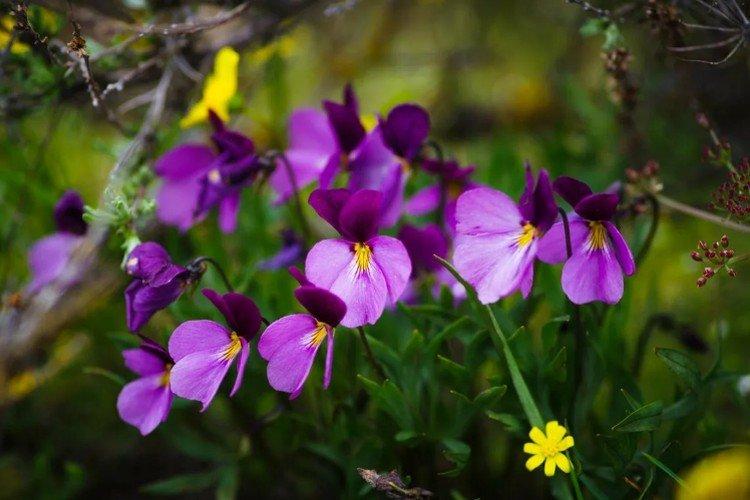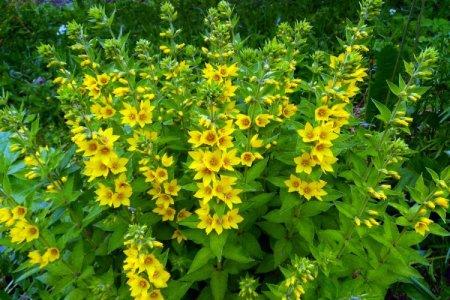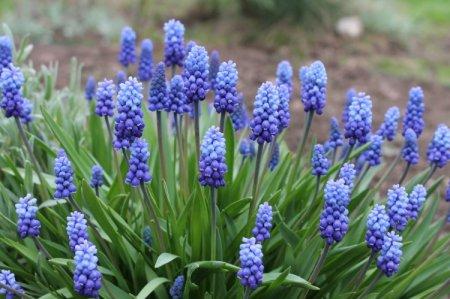
A familiar decoration for home windowsills, the violet feels great in the garden. And it's not surprising, because in nature it is a wild perennial, which is also very unpretentious. Let's talk in more detail about the intricacies of growing and keeping violets!
general information
Most violets are perennials, but in the garden they are most often grown as annuals and biennials. This is due to the fact that they grow and lose their decorative effect. Large ovoid or heart-shaped leaves are collected in a basal rosette.
In their natural environment, violets prefer partial shade and open humid places, regardless of whether they grow in Europe or Africa. Violet flowers are single, with large lower petals, can be of different shapes and shades. The average height of the bushes is up to 30 cm, but there are also completely dwarf varieties.
Violets bloom in spring or summer, depending on the variety. They feel great between trees, near conifers and among bushes. They can also be used to decorate rock gardens, and also to be planted in containers and pots.

Types of violets
The choice of violets is so huge that the number of their species has already exceeded 500 for a long time. But for floriculture, several of them are especially interesting!
Fragrant violet
This is a perennial with the same purple, pink or white buds. Its characteristics are heart-shaped leaves, simple or double flowers and a bright aroma due to the high content of essential oils.

Graceful violet
Graceful appearance with scalloped textured leaves and large flowers up to 4 cm each. Graceful violets grow better in partial shade, bloom until autumn, but need nutritious soil.

Horned violet
Another perennial, but with a more varied palette of shades. For example, there are even yellow flowers. In addition, they are larger, up to 5 cm in diameter, and with a small horn on the back.

Labrador violet
A fragrant compact look up to a maximum of 10 cm high. The leaves of the Labrador violet are bronze or purple, and the buds are deep pink.

Altai violet
Ideal for breeding in difficult Siberian conditions. In addition, in nature, it is found on the territory of Kazakhstan. Single buds up to 3 cm bloom on long peduncles.

Tricolor violet
A field species, the flowers of which are painted in three colors at once - purple, lilac and yellow. The different varieties can be grown as annuals or perennials.

Dog violet
Its flowers are very interesting to hide in the axils of the leaves. It blooms by the end of spring of medium size with flowers of all shades of white, blue and lilac. This is a more sprawling look.

Violet Wittrock
A huge and varied category of decorative hybrids with an endless selection of shades, shapes and sizes. Spectacular spotted varieties are especially interesting.

Violet care
It is enough to competently plant a violet once, in order to admire its beauty for years later. It will only be necessary to plant and thin out the flowering carpet on time.
Temperature and lighting
Most garden varieties are cold and frost resistant. But they tolerate the heat worse and can stop blooming in direct sunlight and at temperatures above +30 degrees. Lighting preferences depend on the particular variety.

Watering
Violets should not be poured, so keep a close eye on the condition of the soil. For watering, you can use slightly acidified water. In hot weather, spray in the morning and evening. The main thing is that the water for all procedures is warm.

The soil
Violets definitely need a loose and light soil that retains moisture well, but does not turn into a swamp. Therefore, be sure to use baking powder like vermiculite and sand.It is sometimes helpful to add angle or ash. For planting in containers and pots, use ready-made soil mixtures for violets with optimal acidity.

Fertilizers and feeding
Violets need mineral fertilizers for flowering plants, which contain more potassium and phosphorus than nitrogen. We advise you to reduce the dosage relative to the manufacturer's recommendations for other colors. You cannot use fresh organic matter, because it causes burns.

Thinning
A thick carpet of violets must be thinned out, because otherwise it is a sure way to mold and mildew. Good air circulation is a must, especially on wet, cool days.

Wintering
Annual varieties with the onset of the first frost are simply removed along with the root system. In perennials, it is imperative to cut off the peduncles and all dry parts of the plant. If the winter is snowless, provide an easy shelter. Violet reproduces well by self-seeding, so in the spring you can simply choose the strongest shoots.

Planting and breeding
Fresh seeds are planted in the fall directly into the ground, and then young shoots appear in the spring. It is not necessary to cultivate one plant for more than 3 years, so further the division of the bush and propagation by cuttings goes into action.
If you want to better control the shape and size of the planting, plant the seedlings in containers. In this case, the seeds are sown 1-1.5 months before transplanting to a permanent place. After 1.5-2 weeks in warmth and humidity, but in the dark, seedlings will appear. When real leaves appear, start using fertilizers.
Before transplanting, gradually harden the seedlings by exposing them to the air for a couple of hours. When the weather is stable, plant the healthiest seedlings in your garden with lots of buds.

Pests and diseases of violets
Violet leaf spot is most often caused by sunburn or improper spraying of the leaves. But if the spots spread quickly, become covered with plaque and change their structure, this is a sure symptom of a fungus.
It can be rust with red spots or powdery mildew with a white coating. Regardless of the type of fungal disease, there is only one treatment - to remove the damaged parts of the plant and treat all with fungicides.
Chlorosis manifests itself due to improper care, and in particular, with a lack of fertilizers. Due to damage to the roots with improper transplantation and reproduction, rot develops. All this can be avoided by carefully following agricultural techniques.
The most common pest of violets is aphids, which in addition carry viruses and infections. But spraying with warm water and soapy water helps a lot. Spider mites, wide and cyclamen mites, as well as small mosquitoes sciarids, also settle on violets. It requires mandatory treatment with professional insecticides.
A white powdery bloom can be a sign of a mealybug. With a small number of pests, it can be collected mechanically. For the rest, spraying with warm water and insecticides also helps.
The most dangerous pest is nematodes, which destroy the root system. They are very difficult to see from the outside, but they leave wounds throughout the plant. Growths and bumps form on the roots, and gradually the plant rots. Violets affected by nematodes need to be removed as soon as possible.

Violet - photo
Violets are so varied in color and appearance of flowers that each flower bed is always unique in its own way. At the same time, they clearly retain common features, for which we love them!




























